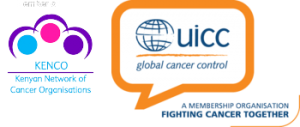FAQ’s
Anyone can get cancer at any age, but the risk goes up with age, with people older than 50 being at risk of being diagnosed with most types of cancer. In women chances of being diagnosed with breast cancer being higher to women aged 35 years and above, and men being at the risk of getting diagnosed with prostate cancer after the age of 40.
A risk factor is anything linked to your chance of getting a disease, such as cancer.Different cancers have different risk factors. For instance, exposing skin to strong sunlight is a risk factor for skin cancer, but it’s not linked to colon cancer. Some risk factors can actually cause cancer, while others may simply be more common in people who get cancer. For example, old age by itself doesn’t cause cancer, but it is a risk factor.
Still, risk factors don’t tell us everything. Having one risk factor, or even many, does not mean that someone will get cancer. Some people with one or more risk factors never develop the disease, while others who do develop cancer have no known risk factors. Even when a person who has a risk factor is diagnosed with cancer, there’s no way to prove that the risk factor actually caused the cancer.
There are different kinds of risk factors. Some, like a person’s age or race, can’t be changed. Others are linked to cancer-causing factors in the environment. Still others are related to personal actions, such as smoking. Some factors influence risk more than others, and a person’s risk for cancer can change over time, due to factors such as aging or lifestyle.
Some of the major cancer risk factors that can be controlled:
- Tobacco use
- Diet
- Physical activity
- Weight
- Alcohol use
- Sun exposure
- Environmental exposures, such as radon, lead, and asbestos
- Exposure to infections such as hepatitis, HPV, and HIV
It’s a common myth that injuries can cause cancer. But the fact is that falls, bruises, broken bones, or other such injuries have not been linked to cancer. Sometimes a person might visit a health care provider for what’s thought to be an injury and cancer is found at that time. But the injury did not cause the cancer; the cancer was already there. It also sometimes happens that a person will remember an injury that happened long ago in the place cancer was found.
Researchers have done many studies to see if there’s a link between personality, attitude, stress, and cancer. No scientific evidence has shown that a person’s personality or outlook affects their cancer risk.
It’s known that stress affects the immune system. However, despite many studies, a link between psychological stress and cancer has not been found.
People often stay away from someone who has cancer. They are afraid they might “catch” the disease. But cancer isn’t like the flu or a cold. You can’t catch cancer from someone who has it. You won’t get cancer by being around or touching someone with cancer. Don’t be afraid to visit someone with cancer. They need the support of their family and friends
There’s no sure way to prevent cancer, but there are things you can do to help reduce your chances of getting it.
This is through avoiding the risk factors earlier. Avoiding tobacco, alcohol, red meat, exercise more often. Also, going for regular screening can help in early detection, hence saving lives.
A person’s signs and symptoms are not enough to know whether they have cancer. If your health care provider suspects cancer you will need more tests, such as x-rays, blood tests, or a biopsy. In most cases a biopsy is the only way to be sure whether cancer is present.
To do a biopsy a piece of the lump (tumor) or abnormal area is taken out and sent to the lab. There, a doctor who specializes in diagnosing diseases (called a pathologist) looks at the cells under a microscope to see if cancer cells are present. If there are cancer cells, the doctor tries to figure out what type of cancer it is and how fast it’s likely to grow.
Imaging tests can measure the size of the cancer and can often show if it has spread to nearby tissues. Blood tests can tell providers about your overall health, show how well your organs are working, and give information about blood cancers.
Surgery, chemotherapy, and radiation are the 3 main types of cancer treatment. A person with cancer may have any or all of these treatments. In choosing a treatment plan, the most important factors are generally the type of cancer and the stage (amount) of the cancer. Other factors to consider include the person’s overall health, the likely side effects of the treatment, and the probability of curing the cancer, controlling it to extend life, or easing symptoms.
Surgery
Surgery is often the first treatment used if the cancer can be taken out of the body. Sometimes only part of the cancer can be removed. And, sometimes there may be risks to doing surgery for a cancer diagnosis. Radiation or chemotherapy might be used to shrink the cancer before or after surgery.
Chemotherapy
Doctors use chemotherapy or “chemo” drugs to kill cancer cells. Usually, the drugs are given intravenously (IV or into a vein) or taken as a pill by mouth. Chemo drugs travel throughout the body in the bloodstream. They can reach cancer cells that may have spread away from the tumor.
Radiation therapy
Radiation therapy is treatment with high energy rays (such as x-rays) to kill or shrink cancer cells. The radiation may come from outside the body, called external radiation, or from radioactive materials placed right into the tumor (internal or implant radiation). Getting external radiation is a lot like getting an x-ray.
Other types of cancer treatment
Other kinds of treatment you might hear about include targeted therapy, stem cell or bone marrow transplant, and immunotherapy. Hormone therapy is another type of treatment that’s sometimes used to treat certain kinds of cancer.
Clinical trials
Clinical trials are studies in which people volunteer to test new drugs or other treatments. In cancer treatment, clinical trials may be used to learn whether a new treatment works better than the treatments used today. For instance, clinical trials are used to see if adding a new drug to the standard therapy makes it work better. In studies like this, some patients get the standard drug(s) (which are the best available at the time) and the new one being tested, while other patients get the standard drug(s).
Clinical trials are one way to get “cutting-edge” cancer treatment. Contact us and talk to your cancer care team to learn more about clinical trials and whether one might be right for you.
Doctors consider each patient as an individual with personal preferences, and then make recommendations based on things like their own personal experience, current research, the goal of treatment (cure or control), and current cancer treatment guidelines .
Each type of cancer treatment has different side effects. It’s hard to predict what side effects a person will have; even when people get the same treatment they can have different side effects. Some can be severe and others fairly mild. It’s true that some people have a tough time with cancer treatment, but many others manage quite well. And most cancer treatment side effects can be treated.
Chemo’ side effects
Short-term (and often treatable) side effects of chemo can include things like nausea and vomiting, appetite loss, hair loss, and mouth sores. Because chemo can damage the blood-making cells in the bone marrow, patients may have low blood cell counts. This can lead to:
- Higher risk of infection (from a shortage of white blood cells)
- Bleeding or bruising after minor cuts or injuries (from a shortage of blood platelets)
- Anemia (from low red blood cell counts), which can cause tiredness, shortness of breath, pale skin, and other symptoms
- Cancer care teams work carefully with patients to manage the side effects of chemo. Most chemo side effects go away after treatment ends. For example, hair loss during treatment usually grows back after treatment is over.
Radiation side effects
Radiation treatments are much like x-rays and are not painful. The most common side effects are skin irritation in the treatment area and fatigue. Fatigue is a feeling of extreme tiredness and low energy that doesn’t get better with rest. It often lasts for many weeks after treatment ends. Other side effects can happen, too, depending on what part of the body is being treated.
Many cancers can be cured, but not all of them and not always.
Cure means that treatment has made the cancer go away, and there’s no chance that it will come back. It’s rare that a doctor can be sure that cancer will never come back. In most cases it takes time, and the longer a person is cancer free, the better the chance that the cancer will not come back.
Below is a list of facilities that offer #Cancer screening, treatment and management services in Nairobi.
1. Nairobi Hospital – they offer cancer screening and chemotherapy services.
2. Nairobi Womens Hospital – specializes in gynecologist oncology, testing and treatment. (Breast and cervical cancers.)
3. M.P Shah – they offer diagnosis, chemotherapy and radiotherapy treatments.
4. Texas Cancer Centre – provides cancer screening and treatment services.
5. Kijabe Mission Hospital – offers cancer screening, chemotherapy and surgery treatment for several cancers, (primarily breast cancer, Kaposi’s sarcoma and surgically treatable cervical cancer.)
6. Aga Khan University Hospital – provides detection and screening programs, specialized diagnosis, chemotherapy and radiotherapy treatment, palliative and rehabilitation programs.
7. Kenyatta National Hospital – offers cancer screening diagnosis, treatment, surgery,
chemotherapy and palliative care programs.
8. Mater Hospital – offers breast, leukemia, cervical and prostate cancer screening testing as well as malignant tumors for general cancer management services.
For patient support, psychological and social support, here is a list of institutions that offer these services:
- Nairobi Hospice.
- The Aga Khan University Hospital.
- Faraja.
- Kenyatta National Hospital.
The pricing for screening, treatment and management varies in different facilities.
If you live outside Nairobi, any level 5 facility in your county will be of help.
If you have any question, email it to info@eddahs-hope.org and we will be sure to get back to you with an answer.

 © 2023 #CancerSoldier is registered trademark of Eddah’s Hope Cancer Foundation.
© 2023 #CancerSoldier is registered trademark of Eddah’s Hope Cancer Foundation.